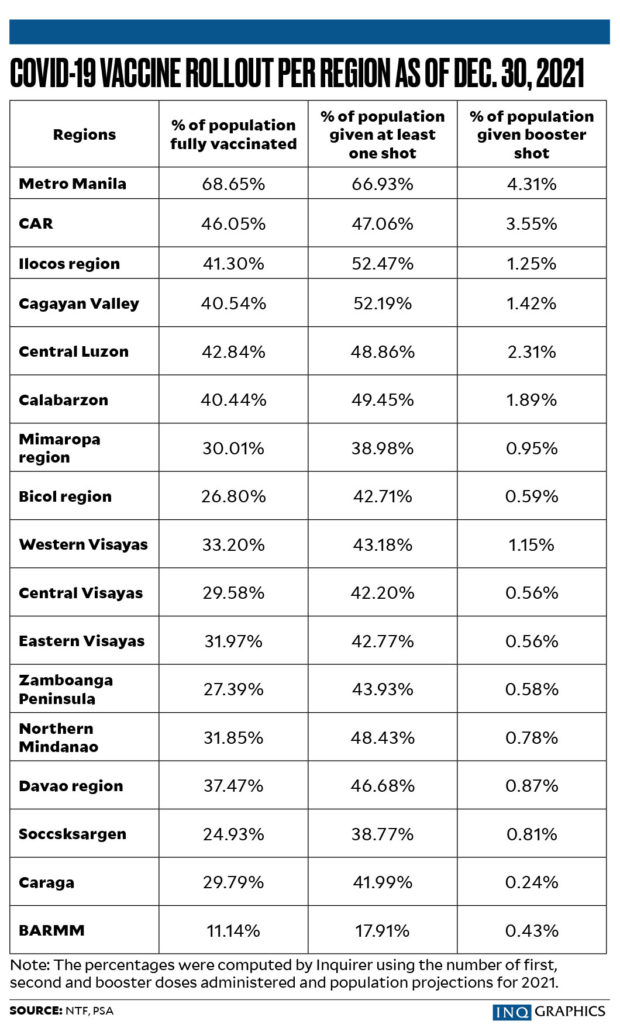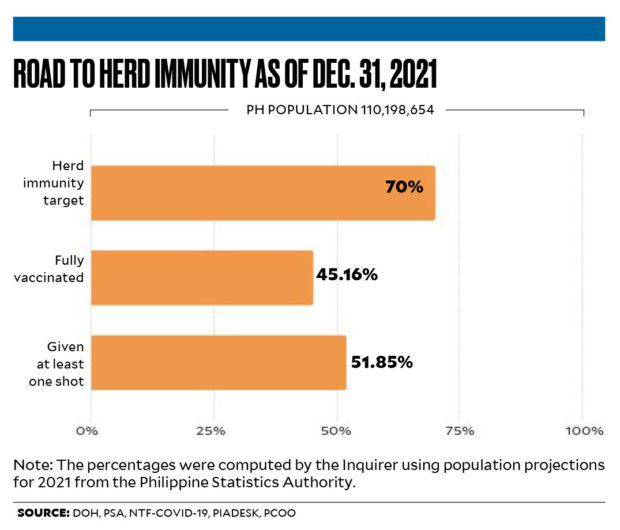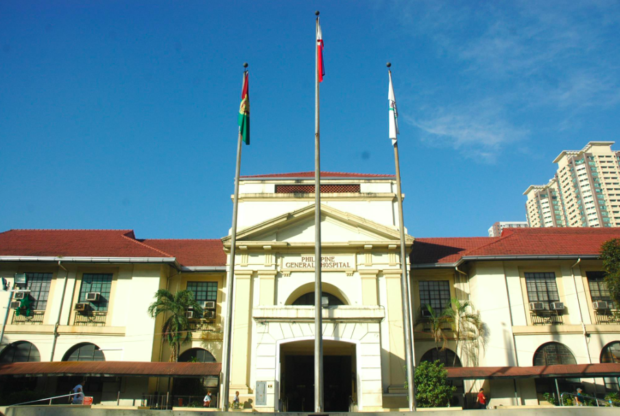PGH log, DOH count show sharp COVID rise
MANILA, Philippines — The Philippine General Hospital (PGH) has been admitting a “steady increase” in COVID-19 patients in recent days, reflecting the sharp rise in the number of cases, particularly in Metro Manila in the last weeks of 2021, a hospital official said on Saturday.
The Department of Health (DOH) reported 3,617 COVID-19 cases nationwide on the first day of the new year, up from nearly 3,000 the previous day and more than twelve times the 300 recorded in mid-December 2021.
The DOH said Saturday’s figure was based on cases from Dec. 19, 2021 to Jan. 1, 2022, and that most of them were accounted for by Metro Manila (2,526 cases, or 70 percent), Calabarzon (570, or 16 percent) and Central Luzon (199, or 6 percent).
Reopening ward
Dr. Jonas del Rosario, the spokesperson for one of the main referral hospitals for COVID-19 in Metro Manila, said PGH had 30 COVID-19 patients on Christmas Day and this number nearly tripled in just a week to 85 on New Year’s Day.
“We were seeing a steady increase of six to 10 patients a day for the last six days,” he told the Inquirer.
Del Rosario said PGH had 100 beds for COVID-19 patients and would have to reopen another ward them.
“Further increase in the COVID-19 admissions will necessitate us to reconvert some of the non-COVID wards to COVID,” he said.
Back to level 3
The PGH will prioritize patients with moderate to severe cases of COVID-19 for admissions and have all mild cases redirected to other hospitals “if home care is not feasible,” Del Rosario said.
The recent spike in cases and the DOH warning on Friday of a “high probability of exponential growth” of infections, plus the local transmission of the more contagious Omicron variant of the coronavirus, prompted the Inter-Agency Task Force for the Management of Emerging Infectious Diseases to place the National Capital Region (NCR) under alert level 3 from Jan. 3 to Jan. 15.
The DOH said that of 48 COVID-19 samples analyzed on Dec. 31, three were found to be local Omicron cases while seven were “imported” into the country by travelers from abroad.
CamSur cases
Two of the local Omicron cases are from the Bicol region and the third is from Metro Manila. All three have recovered.
In all, 14 Omicron cases have been detected in the Philippines since early December—11 “imported” and three local transmissions.
The two Bicol Omicron cases were both from Camarines Sur province, according to health officials.
The Regional Epidemiological and Surveillance Unit of the DOH is still tracing the contacts of the two—a 46-year-old partially vaccinated woman from Tigaon town who had not traveled abroad or visited Manila and a fully vaccinated 27-year-old female resident of Bombon town who worked in Manila.
“While more definitive data is needed, the epidemiological investigation on the three local cases indicates there is a high possibility of local transmission,” the DOH said in a statement on Friday.
The DOH on Saturday confirmed 43 more deaths due to COVID-19. Two died in 2020, 36 between June and November, and five in December 2021.
It blamed “late encoding of death information” for the belated reports.
It said it will issue daily COVID-19 case summaries “until further notice,” after drawing flak when it announced that it would stop doing that this year.
14.8 percent
The latest figures brought the country’s total COVID-19 caseload to 2,847,486 and the death toll to 51,545 since the pandemic struck in early 2020.
The sharp rise in cases reflected the increase in the positivity rate, or the proportion of those found positive for COVID-19 among all those tested for the virus.
The positivity rate on Saturday rose to its highest since Oct. 9, 2021 to 14.8 percent out of 29,239 who were tested on Thursday.
Six laboratories, however, did not submit any data while two others were not operational that day. The DOH gets test results for its COVID-19 situational reports from 305 laboratories nationwide.
Of the 17,374 active cases, around 70 percent are mild (11,603) and asymptomatic (673). The are 339 cases that are critical, 1,635 severe and 3,124 moderate.
The DOH also reported 468 had recovered, raising the number of survivors of the severe respiratory disease to 2,778,567.
It said that nationwide, 20 percent of intensive care unit (ICU) beds, 22 percent of isolation beds and 13 percent of ward beds were used by COVID-19 patients.
It was slightly more in Metro Manila where 25 percent of ICU beds, 23 percent of isolation beds and 24 percent of ward beds are occupied.
Metro ‘high risk’ anew?
The independent pandemic monitor OCTA Research group warned that Metro Manila would “likely to be classified as high risk,” projecting that daily cases in the capital region would average around 3,000 and 4,000 for the entire country.
The DOH said that hospital records in NCR showed that 85 percent of those in the ICU and requiring mechanical ventilators were not vaccinated.
“With both Delta and Omicron variants in our midst, we reiterate our call to all who have not yet availed of safe, effective and free COVID-19 vaccines— do not delay any further. “Evidence is clear that vaccines can shield you from severe/critical COVID-19 or dying,” the DOH said on Saturday.
Official data showed 49,765,213 individuals, or 45.2 percent of the population, are fully vaccinated against COVID-19, fewer than the government target of 54 million by the end of 2021.
































